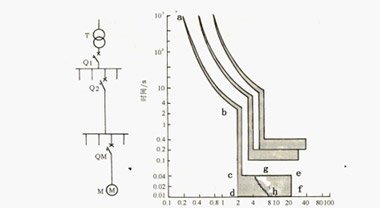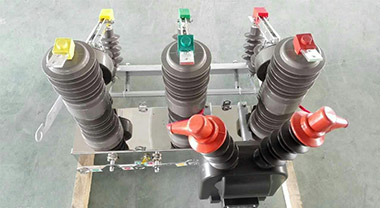Common faults and repair guides of circuit breakers
1. The contact of a certain phase of the circuit breaker cannot be closed
(1) Check whether the connecting rod is broken or deformed.
(2) If it is a current-limiting type circuit breaker, check whether the angle between the detachable connecting rods of the disassembly mechanism is deformed.
2. Manually operated circuit breaker cannot be closed
(1) Check whether there is no voltage on the loss-of-voltage release, and replace the coil if necessary.
(2) Check whether the pressing device of the armature is deformed, and adjust the spring if necessary.
(3) Check whether the stored-energy spring is deformed and the spring force is reduced, and replace it if necessary.
(4) Check whether the reaction force of the reaction force spring is too large.
(5) Check whether the connecting rod of the manual release is deformed.
(6) Check whether the leakage circuit breaker circuit is leaking or grounded.
3. Electrically operated circuit breaker cannot be closed
(1) Check whether the control power supply voltage is too low or the power supply capacity is not enough.
(2) Check whether the motor interruption limit switch is not disconnected in the disconnected position.
(3) Check whether the stroke of the solenoid is too short.
(4) Check whether the control loop circuit is in poor contact, and whether the adjustment element or capacitor is damaged.
4. Circuit breaker temperature rise is too high
(1) Check whether the contact pressure of the contact is too small, adjust the contact spring pressure or replace the contact spring.
(2) Check whether the connecting screws of the main circuit are loose and whether there is an oxide layer.
(3) Check whether the contacts of the circuit breaker are severely worn.
(4) Check whether the contacts of the circuit breaker are burned out by the electric arc and metal particles should be removed and polished.
5. The shunt release cannot make the circuit breaker open
(1) Check whether the coil is broken or whether there is a short circuit between turns.
(2) Check whether the power supply voltage is too low.
(3) Check whether the circuit is faulty or the screws are loose.
(4) Check whether the contact surface is too large.
6. The undervoltage release cannot make the circuit breaker open immediately
(1) Check whether the tripping force is too small, adjust the spring to increase the tension.
(2) Check whether the force of the stored energy spring is reduced.
(3) Whether the mechanism is stuck, such as rust, deformation, etc.
7. After closing the circuit breaker, it opens again after a period of time
(1) Check whether the long delay setting value of the overcurrent release is too small, if it is too small, adjust it.
(2) Check whether the electronic overcurrent release parts are damaged.
8. The circuit breaker opens immediately when starting the motor
(1) Check whether the instantaneous setting value of the overcurrent release is too small, if it is too small, adjust it appropriately.
(2) Check whether the parts of the electronic overcurrent release are damaged.
9. Excessive noise of undervoltage release
(1) Check whether the force of the reaction spring is too large.
(2) Check whether there is oil on the working surface of the iron core.
(3) Check whether the short-circuit ring is broken.




